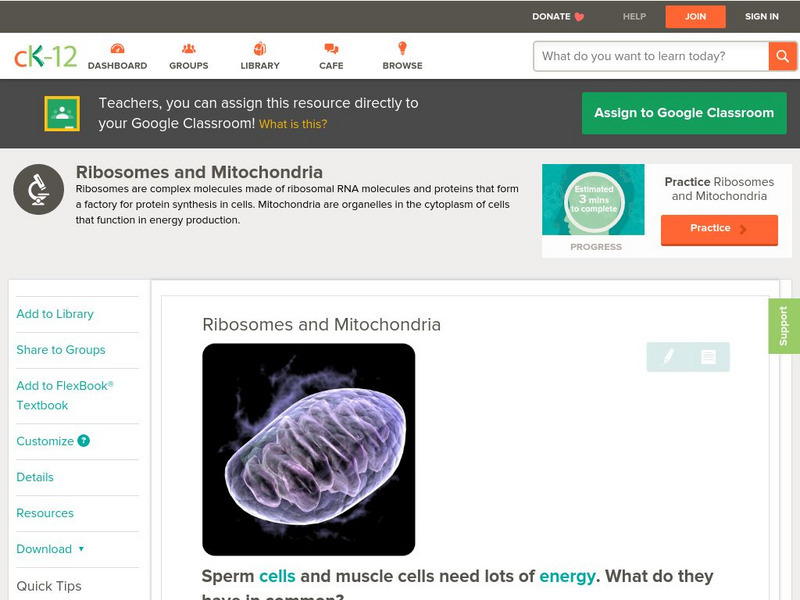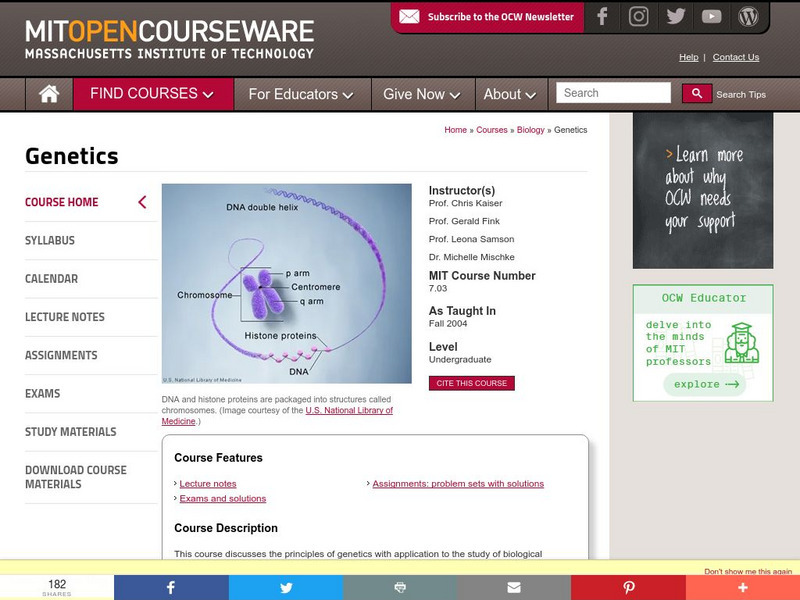CK-12 Foundation
Ck 12: Nucleic Acids
[Free Registration/Login may be required to access all resource tools.] In ths module, discover the structure of a single nucleotide and how that structure leads to the overall structure of DNA and RNA.
CK-12 Foundation
Ck 12: Nucleic Acids
[Free Registration/Login may be required to access all resource tools.] Online activity covers the structure and function of nucleic acids. Students will learn about nucleotides, the different types of nitrogenous bases, and the...
Khan Academy
Khan Academy: Cell Cycle Regulators
This article looks at a few of the most important core cell cycle regulators: proteins called cyclins, enzymes called Cdks, and an enzyme complex called the APC/C.
BiologyWise
Biology Wise: Rough Endoplasmic Reticulum
The endoplasmic reticulum is found in eukaryotic cells and has three layers. Proteins are synthesized in the rough endoplasmic reticulum and its structure and functions are described here.
Sophia Learning
Sophia: Facilitated Diffusion: Lesson 3
This lesson explains the process of facilitated diffusion, explaining that it is a passive form of transport which uses protein channels to move larger molecules down their concentration gradient. It is 3 of 9 in the series titled...
Sophia Learning
Sophia: Facilitated Diffusion: Lesson 4
This lesson explains the process of facilitated diffusion, explaining that it is a passive form of transport which uses protein channels to move larger molecules down their concentration gradient. It is 4 of 9 in the series titled...
Sophia Learning
Sophia: Facilitated Diffusion: Lesson 5
This lesson explains the process of facilitated diffusion, explaining that it is a passive form of transport which uses protein channels to move larger molecules down their concentration gradient. It is 5 of 9 in the series titled...
Sophia Learning
Sophia: Facilitated Diffusion: Lesson 1
This lesson explains the process of facilitated diffusion, explaining that it is a passive form of transport which uses protein channels to move larger molecules down their concentration gradient. It is 1 of 9 in the series titled...
BiologyWise
Biology Wise: What Is a Stop Codon?
A stop codon is a nucleotide triplet in messenger RNA that signals the end of a protein during the translation process. Read about how this works, the different types of stop codons, and how a mutation can sometimes occur.
BiologyWise
Biology Wise: Start Codon
A start codon is a nucleotide triplet in a genetic sequence that occurs at the start of a protein's synthesis. Read about how this works and how a mutation can sometimes occur.
Science Education Resource Center at Carleton College
Serc: Bioinformatics
This project is a series of interrelated modules designed to introduce the student to modern biological techniques in the area of bioinformatics. Bioinformatics is the application of computer technology to the management of biological...
National Health Museum
Access Excellence: Linus Pauling (1901 1994)
This Access Excellence site provides a general biography of Linus Pauling, the two-time Nobel laureate who the elucidated chemical bonding, amino acid and protein structures, and the molecular basis of sickle-cell anemia.
University of Arizona
Cell Signaling
Superior site for information on cell signaling. Information provided as a tutorial with multiple choice questions to guide the learner. The site has lots of images and diagrams.
University of Hamburg
University of Hamburg: Transcription
Decent text based description of transcription. Good background.
PBS
Pbs: Nova Labs: The Rna Origin of Life
Learn about the RNA world hypothesis through short animations, informational text, and interactive questions in this virtual lab.
BiologyWise
Biology Wise: Rough Endoplasmic Reticulum and Cell Metabolism
The characteristics of the rough endoplasmic reticulum are described and its role in protein synthesis, including creating proteins, folding them, transporting them, and checking them for quality.
CK-12 Foundation
Ck 12: Life Science: Rna
[Free Registration/Login may be required to access all resource tools.] DNA contains the instructions to create proteins, but it does not make proteins itself. DNA is located in the nucleus, which it never leaves, while proteins are made...
Educaplus (Jesús Peñas Cano)
Educaplus: Estructura De Las Proteinas [In Spanish]
Observe how the proteins possess a central chemical structure consisting of a linear chain of amino acids folded in such a way that it displays a three-dimensional structure.
CK-12 Foundation
Ck 12: Biology: Ribosomes and Mitochondria
[Free Registration/Login may be required to access all resource tools.] Describes the structure and function of ribosomes and mitochondria.
Massachusetts Institute of Technology
Mit: Open Course Ware: Courses: Biology: Genetics
College-level course focusing on the principles of genetics. Course topics include structure and function of genes, chromosomes and genomes, biological variation, population genetics, use of genetic methods to analyze protein function,...
City University of New York
The World of Cells: Nucleus
A good description of the structure and function of the nucleus.
BioMan Biology
Bio Man Biology: Life Chemistry Quizzes
Two multiple-choice quizzes, one on the processes and types of biological molecules, the other on the structure and replication of DNA.
CK-12 Foundation
Ck 12: Life Science: 3.6 Rna
Learn about the structure and function of RNA in the body.
Cold Spring Harbor Laboratory
Dolan Dna Learning Center: Dna Molecule: How Dna Is Packaged Advanced
An animated tutorial showing how each chromosome consists of one continuous thread-like molecule of DNA coiled tightly around proteins. [1:42]

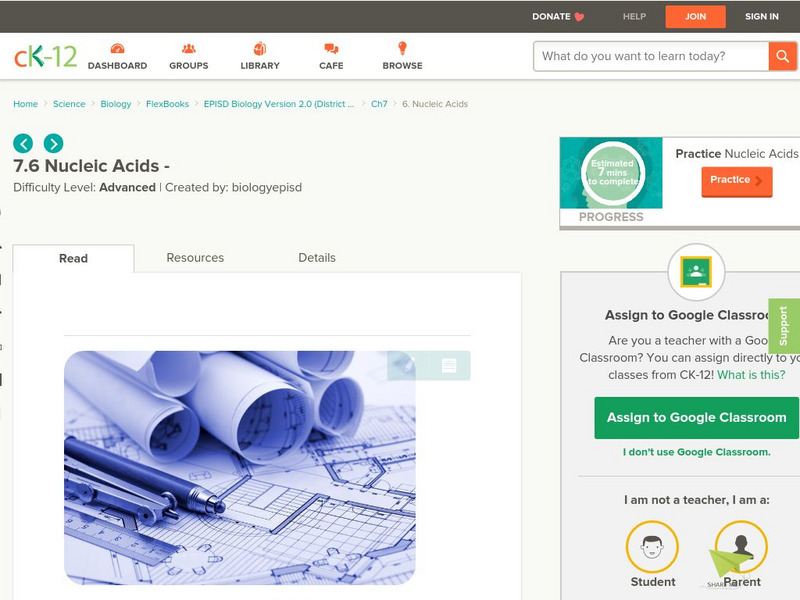


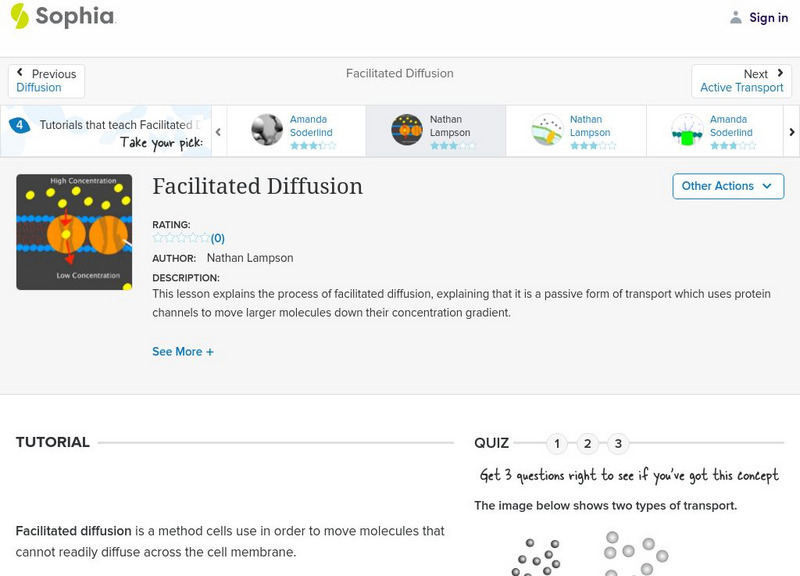

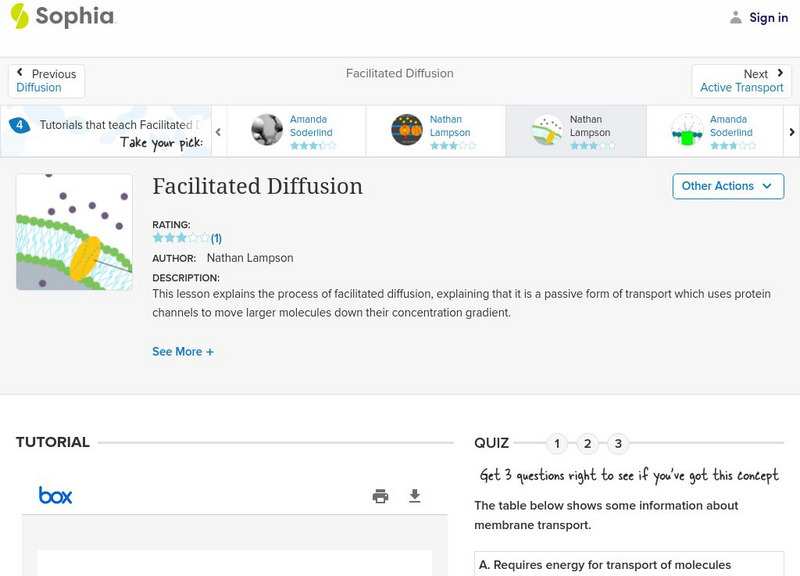



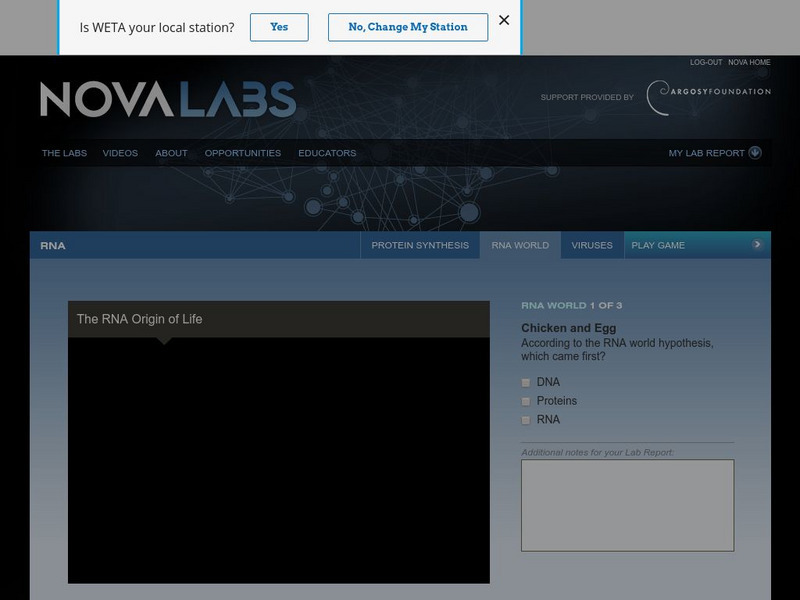

![Educaplus: Estructura De Las Proteinas [In Spanish] Graphic Educaplus: Estructura De Las Proteinas [In Spanish] Graphic](https://content.lessonplanet.com/knovation/original/369547-2fe60ee3e2b4583e00766af68abe3efd.jpg?1661812329)
